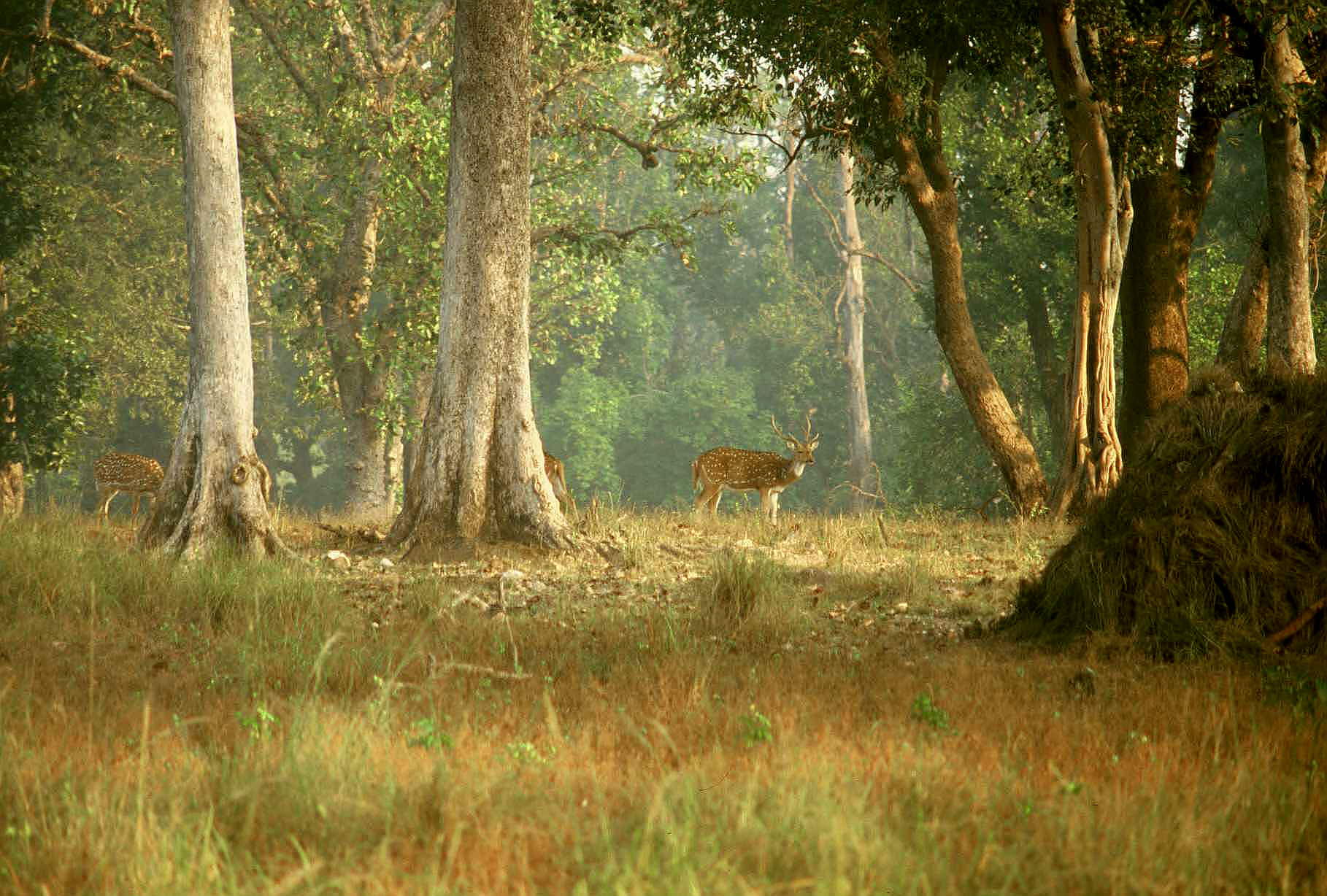Madhya Pradesh has many national parks and Kanha National Park is the state’s grandest tiger reserve, and also perhaps one of the best in India. It was said to have inspired the ‘Jungle Book’.
Historically, Kanha was a prime hunting territory for the British army officers and civil service officers. It became a wildlife sanctuary in 1933, and in 1974 it was declared a national park.
In 1973’s Project Tiger, Kanha volunteered as one of the first participants.
One can visit the park between November and July; after that the monsoon arrives. The park sees maximum visitors during the winter months between November and February. However, budding tiger spotters should visit between March and June. This is because the seasonal heat leads the tigers to creeks and watering holes.
Bamni Dadar is a commonly recommended area – one can witness the sunset from here, hence the name, ‘Sunset Point’. And one can also see the dense foliage of Kanha’s forests from here. Nearby, one can expect sightings of the barking deer, the Indian Bison and the four-horned antelope.
Wildlife
Shutterbugs and wildlife enthusiasts are regular visitors to Kanha National Park, because it has one of India’s most abundant diversity of flora and fauna. One will be able to spot tigers while enjoying the elephant safaris – something that is becoming increasingly rare in the subcontinent. Kanha is also known for its population of the two endangered species, the Gaur and the hard-hoofed swamp Deer (known in India as ‘Barasingha) that feed on the grasslands.
The easiest animals to spot are the Striped Palm Squirrel, the Langur and the Jackal. Along with the tiger, it’s also hard to spot the Indian Wild Dog, Barking Deer, and the Indian Bison. A bit of patience and one’ll be able to spot foxes, sloth bear, jungle cat, and even porcupines. Wolves often limit their movement to the park’s far-east side.
Bird-watching
There are about 200 bird species at Kanha. To spot them, one must set up one’s binoculars at a location in the hills, preferably early in the morning, or late in the afternoon. One will be able to spot many birds in the mixed and bamboo forests, as well as grassy clearings. For water birds, one can visit the park’s many rivulets and its pool. One will be able to spot the Black Ibis, the Crested Serpent, the Hawk Eagle, the Babbler and the White-Breasted Kingfisher and the Gray Hornbill.
The park has an area of 1945 sq km, out of which 900 sq km consist of the core zone. The buffer area of 1045 sq km makes it one of India’s biggest wildlife sanctuaries.
How to get to Kanha National Park
The best means of transportation is through rail (via Jabalpur, the closest station). Jabalpur has great national connectivity by rail across India. Jabalpur is well connected by rail to most parts of the country. There’s also a daily bus service from Nagpur to Kanha, as well as between Mandla and Kanha. A taxi ride from Jabalpur to the reserve would normally take 3-4 hours. Jabalpur and Nagpur are the nearest airports.


